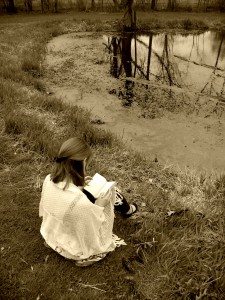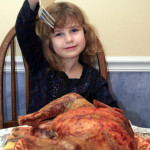How do you find ideas for books? Many of my young adult or middle grade plots came out of newspaper stories. (Runaway, Shadow Self) Some came from incidents suggested from my days as a classroom teacher or from incidents that happened to my own children. I also found ideas from my own life. (The biggest pitfall here is that you have to remember to update a lot of the superficial stuff unless you mean to make the story a period piece. Clothing, music, amusement, electronic devices, social mores, so much will have changed.)
I’ve recently been working on a book about a teen in a military family, a background I know well. I grew up as an army brat, relocating and changing schools often. I moved eighteen times before I left home for college. Mostly it was to other military communities, but I also know what it’s like to end up in a small rural school where everyone else has known each other forever and you’re the lone new person, as happens to my main character. I made his case worse–always up the ante!-by depriving him of his dad, who died a hero, giving him a lot to live up to. The story also deals with how he is targeted by a school bully and wonders if he’s a coward, unworthy of his father. A lot of the story I could draw, bits and pieces, from my own experiences.
Happily, I didn’t lose my own father in that manner, but I was separated from him by calls of duty for long periods, thirteen months at one point, and it was very hard. I cry when I see on television children surprised by returning military parents. (I also think it’s rather unfair to film these kids!) So I know a good deal about the emotions my main character is going through, and authentic emotion is always a key to a good story.
You may not have been a military brat, but I’ll bet you have stories from your own life that could be taken and altered slightly, adapted to make a good starting place for a plot. Pull out your memory book and take a look!
Category Archives: Middle Grade Fiction
FIVE MAVEN WRITING TIPS FOR JUNE – FIRST PAGES

Aack! The year is half over. How did that happen? If you’ve spent the past six months thinking about the book you want to write, this is a good time to get started. And where do you start? With the FIRST PAGE. Here’s what the Mavens have to say:
CHERYL ZACH: First Pages are vital. You must catch the reader’s interest at once. Years ago I heard award-winning author Richard Peck say that he used to give himself ten pages to grab the reader’s attention; now it must be done on the first page. And it’s not just a restless young person you must mesmerize–it’s also the agent or editor who will be your first reader. If your book makes it to print, it’s the book store buyer or the clerk who puts it on the shelf, or it’s the parent of a young child if your book is a picture book. First pages matter.
For a young adult novel, on that essential first page you need to establish who the main character is, give at least a hint of the problem and the setting. Sound hard? It is. The first page will go through innumerable drafts. You’ll write it, edit, rewrite many times. Read it aloud, read it to your critique group. Write it again. Hone it, tighten it. For sure tighten it. Every word counts. {Do not do an info dump–try to tell too much on what the book is about, as if you were giving a book report. You want to show; use action, dialogue, sensory details. Bring the story to life immediately.)
Go back through your most loved novels or picture books. Old favorites are allowed, but be sure to read many new books, too. See what the current best sellers are, what editors and readers like today. See what skillful writers can do with a few lines, a couple of paragraphs, to grab you by the throat and not let you go.
LAURIE KNOWLTON: What’s so big about first pages?
First pages are not EASY. They need a great deal of thought and rewriting, and rewriting.
Riveting first pages are imperative because they introduce your reader to the main character, the setting’s time and place, and a story problem, quest, or journey.
Your opening line should GRAB your reader making them want to read the next line, and the next line, and the next line. In those lines the writer needs to make the reader care about the main character and what they are up against. The reader needs to feel the conflict. A good way to do this is through strong sensorial action and dialogue that fills in the gaps.
Your first page is either going to keep your reader reading or putting down the book and moving onto something else, or someone else’s book. Don’t let weak first pages keep your reader from consuming your book!
DAWNE KNOBBE: First pages usually become a page further into your chapter. Don’t be afraid to “cut to the chase.”
STEPHANIE JACOB GORDON: Eve Bunting always said: “Start with the moment that’s different.” That means the event that makes your character take notice and react. That moment should be important to your character, make a difference in his/her life, create a situation where something is at stake for the character. The reaction may be physical or emotional, but it should be something that will hook your reader and create a page turn in order to find out what happens next.
JUDITH ROSS ENDERLE: Don’t be surprised if you toss out your first page or even your whole first chapter once you’ve completed your first draft. That’s a lot of firsts, but sometimes you don’t know if you’ve started in the right place until you’ve found out where your story ends.
Happy summer! Happy writing!
BEWARE THE FEAST
No, this isn’t a warning about eating too much of those Thanksgiving fixings. Nor is it a cautionary tale about overindulgence during the December holidays. Everyone knows the repercussions from eating too (burp) much.
This is about the repercussions from feeding your characters too much. Yup, it’s possible. Too much TLC at the table can create havoc and ruin a good plot.
How? Stop to eat and you can kill the tension in your story. And it happens more than you realize, especially in early drafts. It’s fun to write those scenes when family comes together at the table to share food and news. How about the sensory description you can create, when your plot drifts toward an opportunity to gather information at a roadside inn over victuals served before a warm fire? Or maybe your main character chooses to spread a blanket beneath a tree at the park and dive into that picnic basket lush with all manner of wonderful nibbles. Food scenes are sooooo tempting, so yummy.
Avoid temptation! For, while all the yummy noshing is going on, your story conflict has stopped. Sure you can introduce a food fight, but how long can that last. And what about that grand build up to this point, the villain hot on your main character’s trail, the jeopardy lurking around the next corner? All forgotten over a hearty meal and mundane conversation, with the major action now the lifting of a fork or hand from plate to mouth.
Those of us who are mothers are the worst offenders. Don’t let your main character get hurt! Plus it’s tradition to comfort with food. We want to nurture our characters, too.
But in a story that needs to keep the pages turning as conflict builds and the main character heads toward facing his/her nemesis, skip the meals. Let your characters go hungry. They can eat after the story is over. Because, if they stop to eat, there may be no story.
Now take a writing break, enjoy your holiday meals with friends and family. Then, when celebrating is over, get back to writing. And remember, DON’T FEED YOUR CHARACTERS!
From all the Mavens, we wish you much merry, huge happy, and many joyous holidays, followed by superb inspiration and well-earned success in the coming year.

